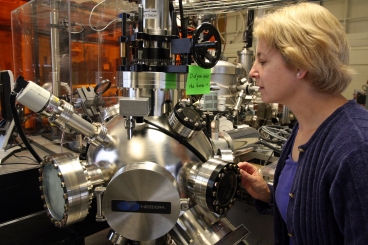MIT Researchers Invent Diode For Light in Optical Circuits
Researchers at MIT have developed a new device that eliminates the need for the conversion of optical to electronic (and, conversely, electronic to optical) signals.
The invention promises a reduction in light reflections and more stability for optical circuits and their lasers. In the end, the entire optical circuit is expected to be much more efficient. According to the scientists, the invention is analogous to an electronic diode, which "allows an electric current to flow in one direction but blocks it from going the other way; in this case, it creates a one-way street for light, rather than electricity."
In current optical circuits, optical signals are converted into an electronic signal at their destination, and converted back to an optical signal using a laser once they have been processed via electronic circuits. MIT's "light diode" could be integrated in one optical circuit and eliminate complex conversion steps as the optical signal can be processed immediately. As a result, the researchers hope that the device will improve data transmission speeds as light flows faster than electrons do. Additionally, optical fiber supports multiple data beams, while wires can carry only a single data stream. "This may be the next generation in terms of speed" for communications systems, said Caroline Ross, co-author of a paper reporting the new device.
Ross and her team developed the diode by using garnet, a transparent and magnetic material. Garnet can transmit light differently in one direction than in another, depending on the direction of the light beam hitting its surface. According to MIT, the researchers were able to "deposit a thin film of garnet to cover one half of a loop connected to a light-transmitting channel on the chip," which enables light to pass through the chip freely in one direction. From the opposite direction, the beam was diverted into the loop.
There was no information on commercial products that may use this technology.
Get Tom's Hardware's best news and in-depth reviews, straight to your inbox.

Douglas Perry was a freelance writer for Tom's Hardware covering semiconductors, storage technology, quantum computing, and processor power delivery. He has authored several books and is currently an editor for The Oregonian/OregonLive.
-
dogman_1234 If they can make a diode this way, think of a transistor that could use this tech. shrink it down to atom size, apply quantum mechanics, and viola! Near-pure quantum processing.Reply -
danraies I saw the link and thought it would be cool to see a picture of one of these "diode's." That was the only reason I clicked the link. I then saw the picture of the enormous microscope and realized the absurdity of that first thought.Reply
Also, any guesses on what's on that sticky note? I'm putting my money on "don't hit your head on this wheel." -
iamtheking123 In the end though they're still a LONG way off from doing anything close to optical computing. Hell there's still debate on whether it's even possible to use light to do anything practically useful for computing (other than move data around through fiber).Reply -
iamtheking123 danraies I'm putting my money on "don't hit your head on this wheel."Reply
I believe it says "Did you mind the bump?" -
Max Collodi danraiesI saw the link and thought it would be cool to see a picture of one of these "diode's." That was the only reason I clicked the link. I then saw the picture of the enormous microscope and realized the absurdity of that first thought.Also, any guesses on what's on that sticky note? I'm putting my money on "don't hit your head on this wheel."It says, and I quote "Did you raise the heater ??"Reply -
snowpeak This is for optical switches, not optical computing. If the technology can be made into an affordable real world device it would enable complete optical networking and allow some really high speed/high volume internet speeds. Right now all fiber optic cables lead to electronic switches (routers and such).Reply
